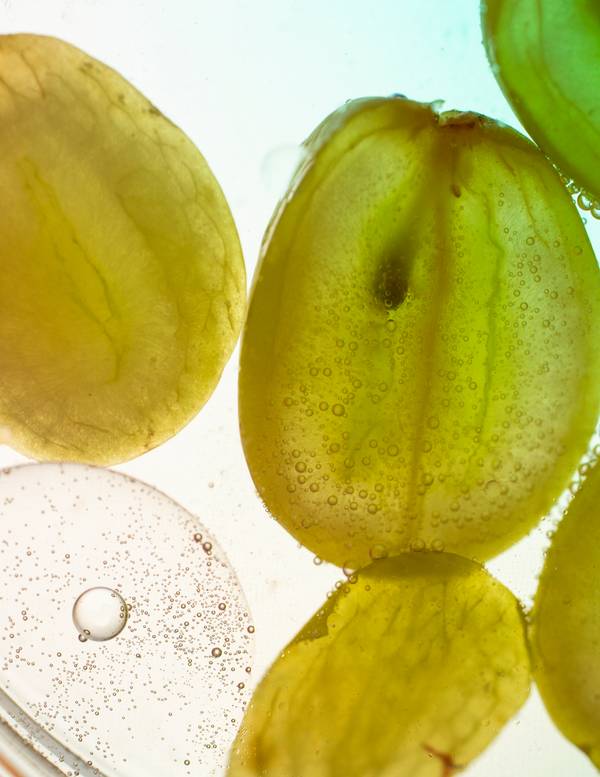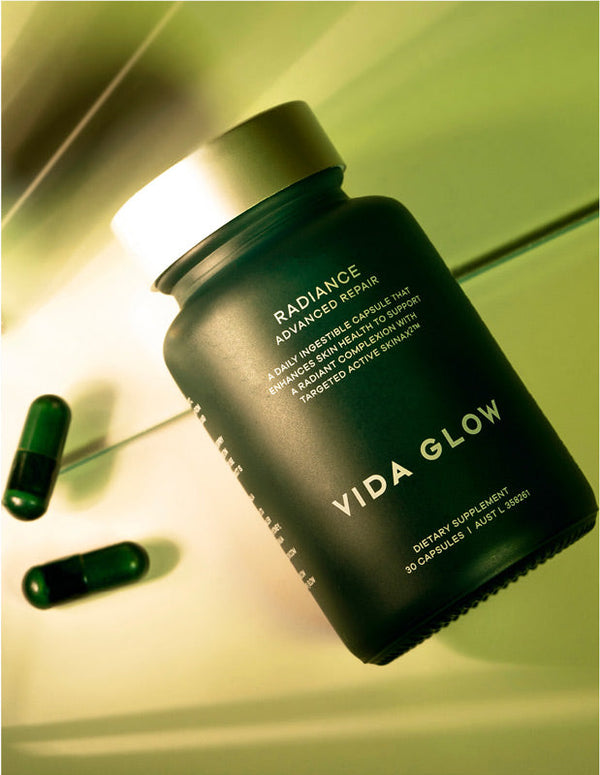How to treat skin pigmentation for brighter skin

How to treat skin pigmentation for brighter skin
Do you see freckle-like spots and dark marks after spending time in the sun or picking a blemish? This is skin pigmentation.
Whether you’re noticing new spots for the first time or have persistent pigmentation, make the common skin concern the centre of your routine.
Vitamin C serums or exfoliating peels are traditionally thought to be the gold-standard in treating pigmentation at home. But when topical skincare doesn’t rise to the occasion, visible results can be achieved from within. Backed by an understanding of what causes pigmentation, the best treatment for pigmentation addresses signs of pigmentation deeper – from where they begin.
To start treating skin pigmentation, keep reading to discover what is skin pigmentation, what causes dark spots and uneven skin tone, and how to get rid of pigmentation for bright, glowing skin<.
What is skin pigmentation?
Skin pigmentation is characterised by melanin imperfections. Melanin is the skin’s natural pigment. When spots of excessive melanin appear in brown spots on the complexion, this is skin pigmentation.
Pigmentation can present on skin in multiple different ways. With the natural ageing process, sun or ‘age’ spots across the forehead, nose and cheeks are common. For those who experience breakouts, similar dark or pink marks can be seen after blemishes. And whether it’s hereditary, or a string of late nights, dark under-eyes can appear. These concerns can all contribute to an uneven skin tone.
Melasma is a particularly challenging skin pigmentation concern. Unlike dark spots and post-blemish marks, melasma is deeper in the dermis and it’s shadowed, mask-like appearance can be temperamental when attempting to treat it topically.
If you’re establishing a routine to treat skin pigmentation, start by identifying your spots and marks – and next, get to know what causes skin pigmentation.
What causes skin pigmentation?
Skin pigmentation is primarily caused by inflammation as a result of environmental stressors.
For sun or ‘age’ marks, skin pigmentation is caused by inflammation from excess UV exposure, while post-breakout spots are the results of the skin’s inflammatory response to breakouts and squeezing or picking at blemishes. To reduce inflammation, our skin cells go into repair mode creating a ‘band-aid’ to protect skin beneath the injury site, triggering excess melanin production. It’s this brown melanin that rises to skin’s surface as pigmentation spots and marks.
Dark under-eyes and dull skin come with busy, modern living – and the less-than-ideal sleep schedule, diet and pollution it brings – leaving skin feeling sallow and lacklustre.
Melasma works a little differently. Melasma can be tied to estrogen changes experienced during pregnancy and with hormonal birth control and some medications. For women who are prone to or experience melasma, it can also be exacerbated by sun exposure and heat.
To address skin pigmentation and uneven skin tone, an effective treatment will work on a cellular level to help prevent the effects of your triggers – and target visible pigmentation.


How to get rid of skin pigmentation
Brightening uneven skin tone and softening signs of skin pigmentation requires trusted skincare actives, and taken deeper for elevated benefits.
Radiance is Vida Glow’s first ingestible for signs of pigmentation. A vegan cellulose capsule, Radiance delivers clinically studied, brightening actives to the epidermis with optimum efficacy.
By addressing melanin imperfections on a cellular level, Radiance’s actives work help soften dark spots and illuminate skin where skin pigmentation begins. An ingestible beauty solution like Radiance goes beyond the superficial layers of skin. It works deeper than the topical limitations of invasive lasers and resurfacing skincare treatments – and without sensitising skin or leaving skin vulnerable to pigmentation’s return.
The formula’s hero active, SkinAx2™, is clinically studied to increase skin luminosity by 26% in 12 weeks. In a clinical trial of Radiance 96% of participants saw an improvement in their pigmentation with consistent supplementation.
Supporting SkinAx2™ in Radiance’s formula is vitamin C, zinc and carotenoids. This gives Radiance its targeted benefits for pigmentation concerns, while the holistic formula to simultaneously enhances skin health and overall luminosity. As vitamin C works to brighten and soften uneven skin tone and zinc repairs skin, carotenoids have a longer-term function. Carotenoids are orange-yellow pigments from plants with antioxidant and photoprotective properties. With consistent supplementation, carotenoids may minimise future pigmentation, helping Radiance maintain healthy, even skin longer-term.
And of course, one of the most effective ways to prevent skin pigmentation is to wear a broad-spectrum SPF daily. Seek shelter and protect your skin from environmental, pigment-triggering stressors to see the best and brightest results from your pigmentation skincare routine.
To treat skin pigmentation, build your skincare routine around your pigmentation concerns – and don’t underestimate the effects of triggers like the sun, pollution and sleep on your skin.
For the active, brightening step in your skincare, adopt a targeted, clinically studied treatment like Radiance. By working below the skin’s surface to soften and illuminate, visibly brighter results are seen and maintained long-term.
Add Radiance to your daily skincare routine, and keep reading for our Skin Professionals' pigmentation tips.

